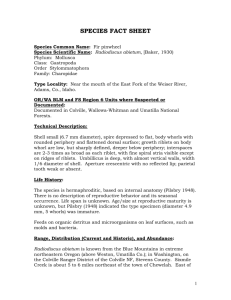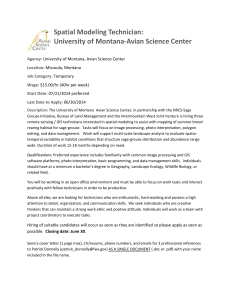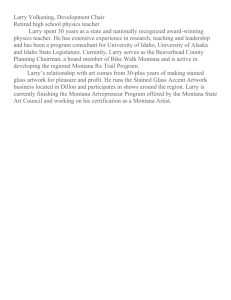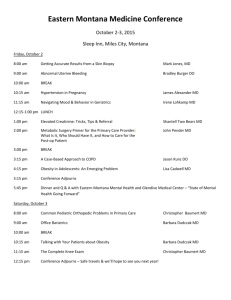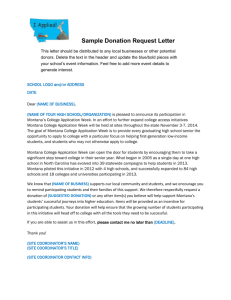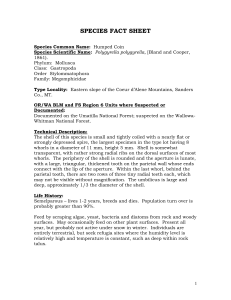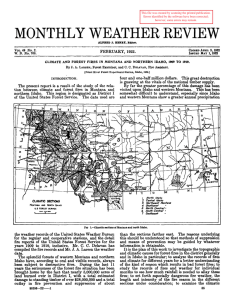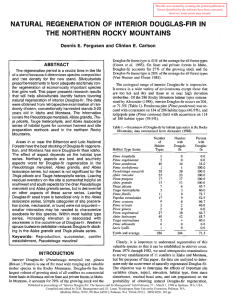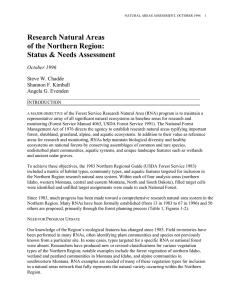SPECIES FACT SHEET
advertisement
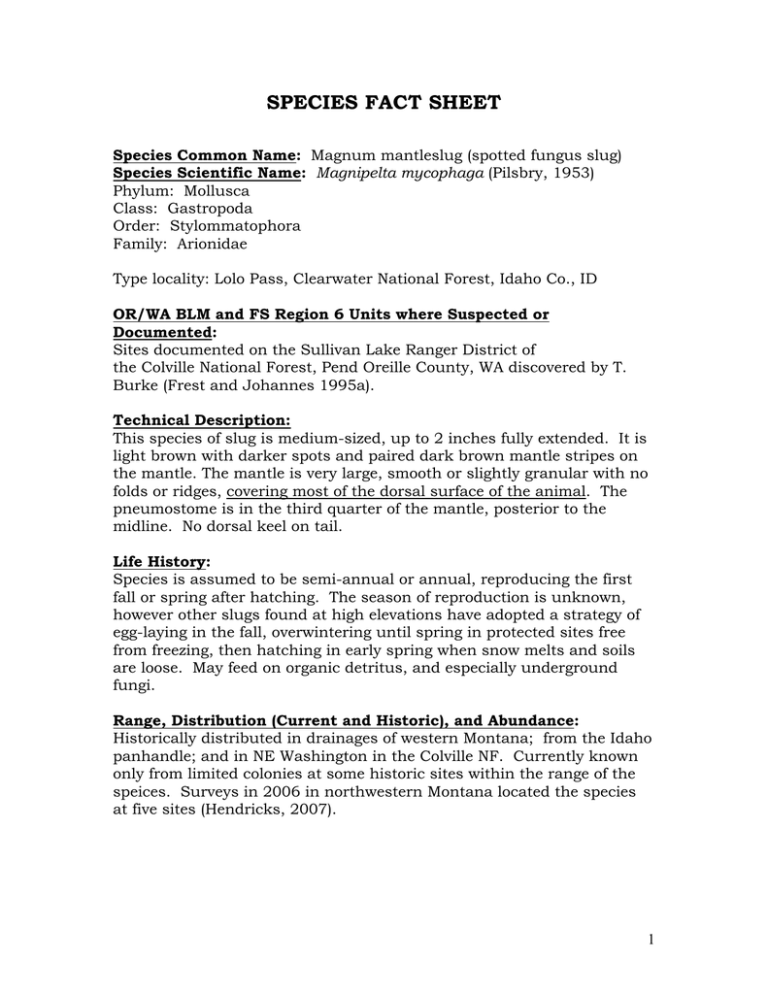
SPECIES FACT SHEET Species Common Name: Magnum mantleslug (spotted fungus slug) Species Scientific Name: Magnipelta mycophaga (Pilsbry, 1953) Phylum: Mollusca Class: Gastropoda Order: Stylommatophora Family: Arionidae Type locality: Lolo Pass, Clearwater National Forest, Idaho Co., ID OR/WA BLM and FS Region 6 Units where Suspected or Documented: Sites documented on the Sullivan Lake Ranger District of the Colville National Forest, Pend Oreille County, WA discovered by T. Burke (Frest and Johannes 1995a). Technical Description: This species of slug is medium-sized, up to 2 inches fully extended. It is light brown with darker spots and paired dark brown mantle stripes on the mantle. The mantle is very large, smooth or slightly granular with no folds or ridges, covering most of the dorsal surface of the animal. The pneumostome is in the third quarter of the mantle, posterior to the midline. No dorsal keel on tail. Life History: Species is assumed to be semi-annual or annual, reproducing the first fall or spring after hatching. The season of reproduction is unknown, however other slugs found at high elevations have adopted a strategy of egg-laying in the fall, overwintering until spring in protected sites free from freezing, then hatching in early spring when snow melts and soils are loose. May feed on organic detritus, and especially underground fungi. Range, Distribution (Current and Historic), and Abundance: Historically distributed in drainages of western Montana; from the Idaho panhandle; and in NE Washington in the Colville NF. Currently known only from limited colonies at some historic sites within the range of the speices. Surveys in 2006 in northwestern Montana located the species at five sites (Hendricks, 2007). 1 Habitat Associations: Like many slugs in the Genus Hemphillia, this species prefers very moist habitats. The presence of refugia in the form of rock talus, deep leaf and needle duff, large woody debris and the association with permanent or persistent water sources seem to be the best habitat microsite associations available. The species has been found at elevations between 762-1585 m (2500-5200 ft) in Montana, and up to about 1829 m (6000 ft) in northeastern Washington (T. Burke personal communication). Other known sites are all at rather high elevations (4500-7500 feet). The type location is sub-alpine pine forest with Abies lasiocarpus present. Sites in Washington are in the Subalpine fir/Menziesia ferruginea plant association. That association may have been changed to Subalpine fir/Rhododendron albiflorum as it has in all areas west of the Colville. Threats: Logging of slow-growing, high-elevation habitat has removed or degraded habitat, as has grazing and urban expansion around Missoula MT. Conservation Considerations: Maintenance of natural hydrologic conditions, by managing for historic vegetation and water-retention capacity of soils in upland areas can prevent loss of animals due to drying of the environment. Limit grazing and logging in older forest habitat to retain undisturbed, un-compacted moist habitats. Prepared by: Nancy Duncan, April 2008 References: Frest, T. J., and E. J. Johannes. 1995. Interior Columbia Basin mollusk species of special concern. Final report: Interior Columbia Basin Ecosystem Management Project, Walla Walla, WA. Deixis Consultants, Seattle, WA. Contract #43-0E00-4-9112. 274 pp. plus appendices. Hendricks, P. 2005. Surveys for Animal Species of Concern in Northwestern Montana. Prepared for Montana Department of Fish, Wildlife & Parks State Wildlife Grants Program Helena, Montana. Hendricks, P. et. al. 2007. Land Mollusk Surveys on USFS Northern Region Lands: 2006. Prepared for USDA Forest Service Northern Region By Paul Hendricks, Bryce A. Maxell, Susan Lenard and Coburn Currier, Montana Natural Heritage Program, Natural Resource Information System, Montana State Library, June 2007. 2 Pilsbry, H.A., 1953. Magnipelta, a new genus of Arionidae from Idaho. The Nautilus 67:37-38. 3
